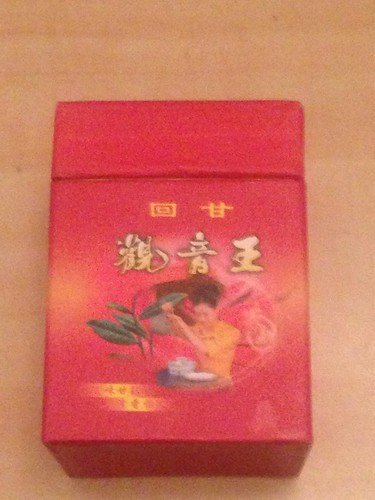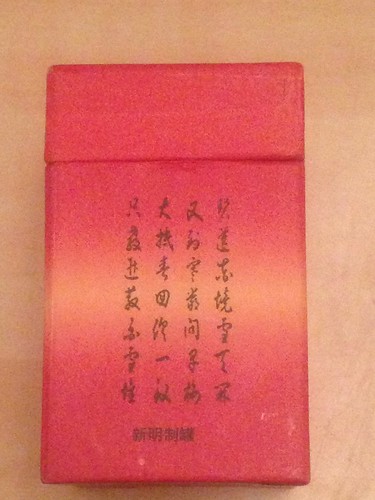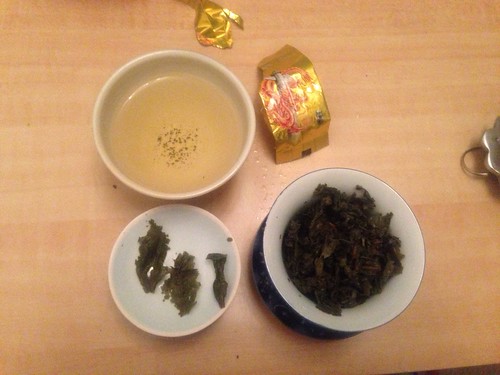by 茶藝-TeaArt08 » May 22nd, '13, 00:38
On the front of the box, the top two characters are: 回甘=hui2 gan1= "dry", likely meaning repeated tanin/dry flavor and has to do with the taste/aftertaste/finish of tea. Basically it implies the tea will give continued dry, "gam gam", tannin, tea throat, essence, aftertaste. You'll see that term used across the forum here to refer to tea, specifically oolong/tie guanyin teas.
The middle of the front of the box, above the picture says, "觀音王“=guan1 yin1 wang2= This could be the name of the tea but the "guanyin" part is what you recognize in “鐵觀音”=tie guanyin, like the tea name/method/type of tea. The three characters could be saying, since 王="king", that it's the king of tie guanyin teas or it could be just the name of the tea.
The back of the box is written in ”草寫“ (cao2 xie3)a form of 書法 (shu1 fa3) calligraphy. This style is purposely loose and whimsical and meant more to convey the spirit/essence of the meaning and of the calligrapher and the characters written than it is to be easily readable. It conveys its meaning through the fluid movement and loose use of the written forms. Thus, not being a native Mandarin speaker, it is very hard for me to read. I can make out characters but can't piece enough of them together to give you the full meaning. My wife, whom is Taiwanese, took a crack and it is even hard for her to read.
The writing seems to be poetic and moves from right to left, going down. She can make out an implication of snow and cold; the character for "Dao" (道) is in there, etc....
The bottom of the back of the box reads: "新明制罐“=xin1 ming2 zhi4 guan4=packaged by "Zhi Guan"
Sorry I can't be more help.
I can't see clearly from the picture you posted of the brewed leaf but the leaves definitely have the rough outer profile of tie guan yin tea.


